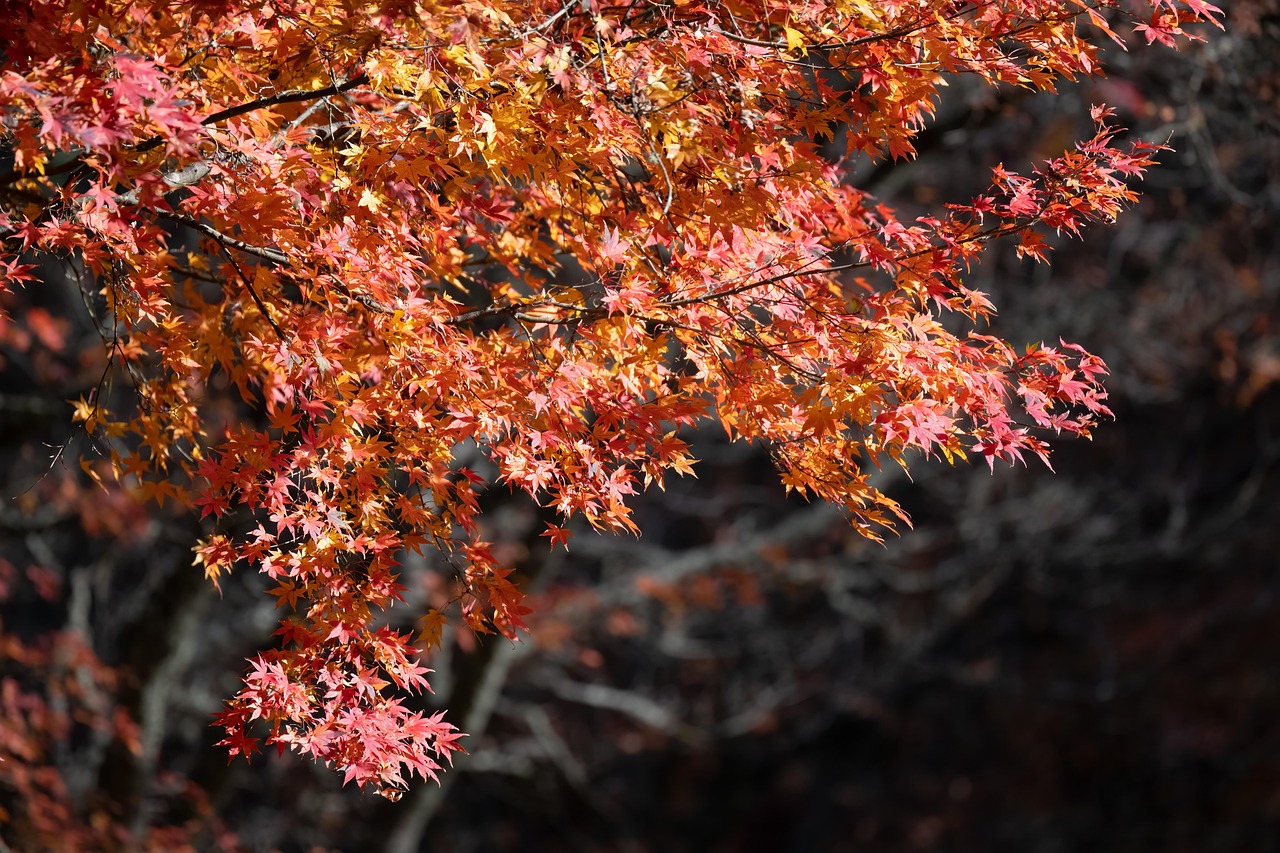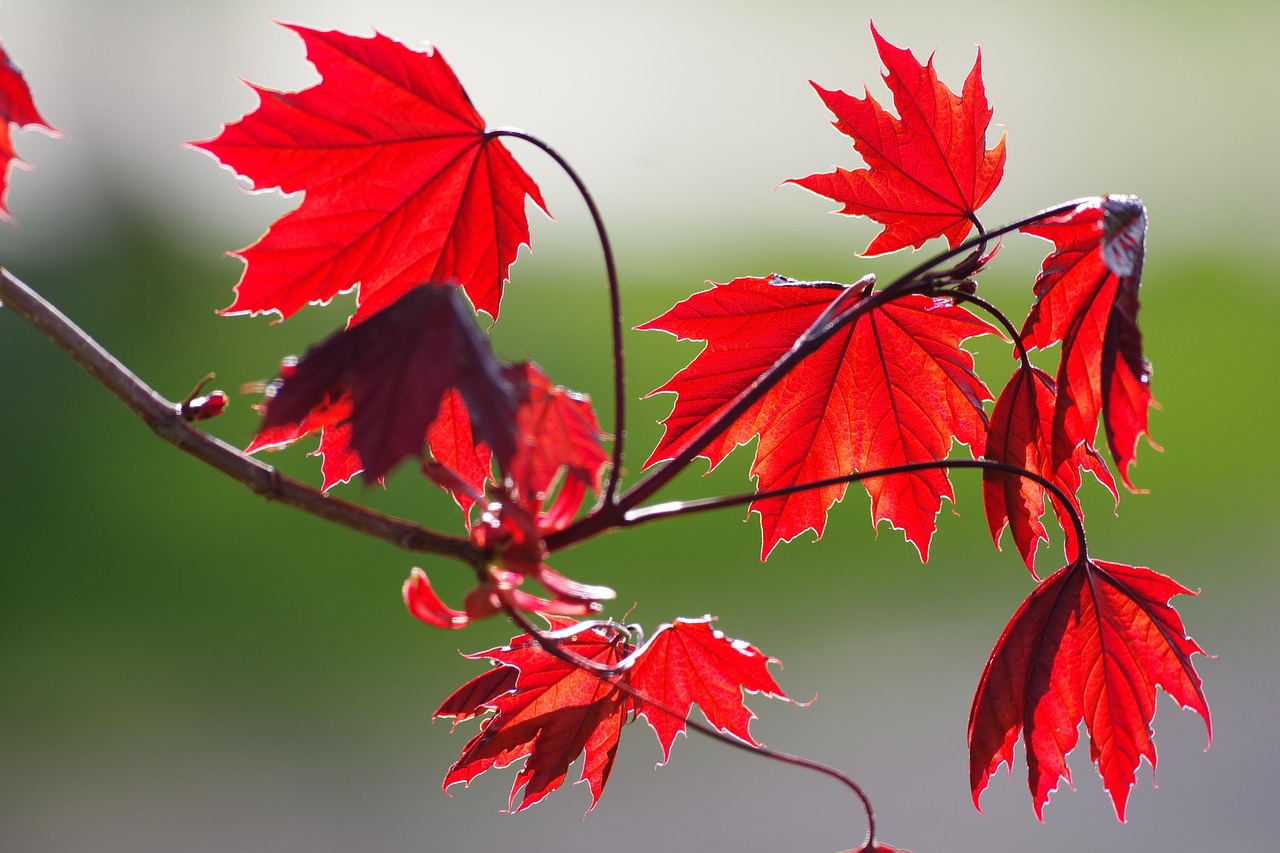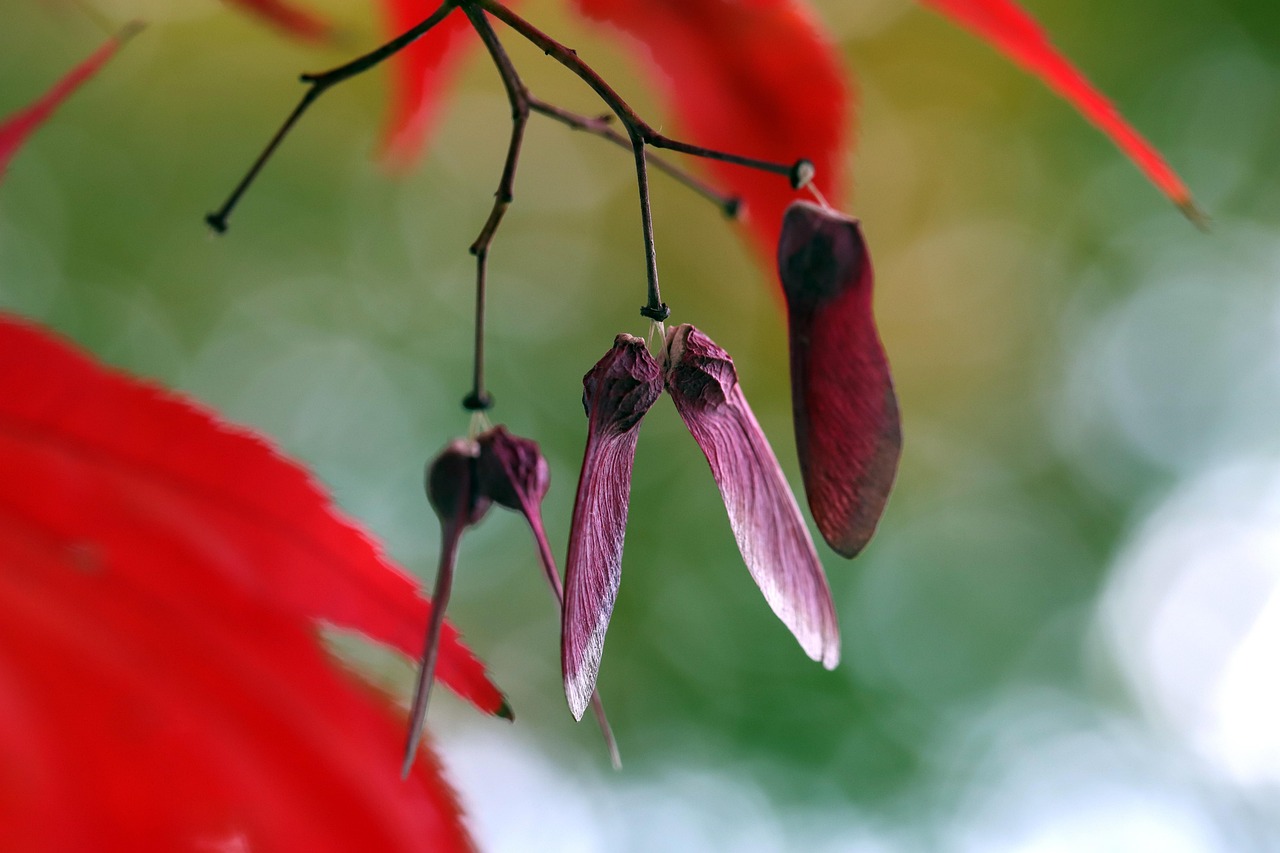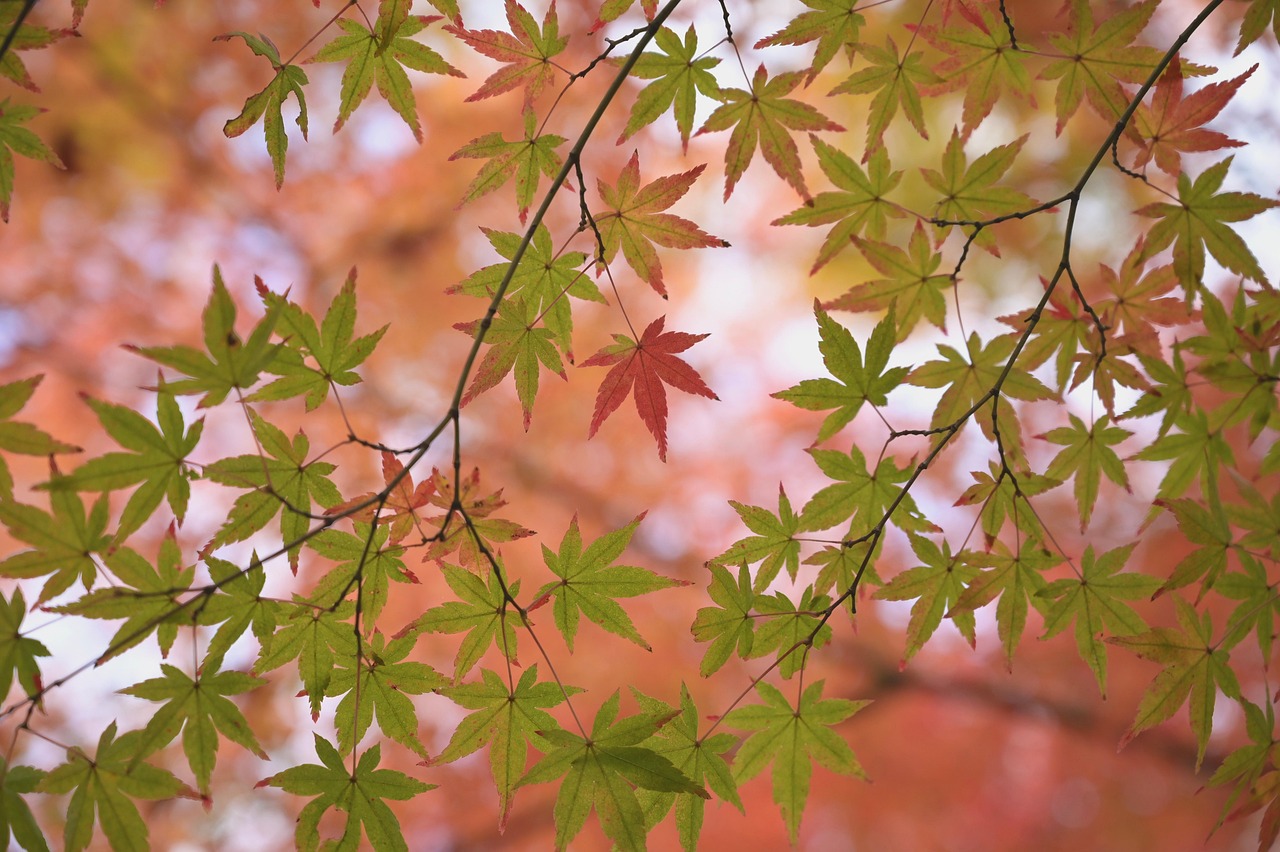Yes, red maple trees can make syrup. While they are not the most common tree for syrup production, their sap contains sufficient sugar to be processed into syrup. The tapping process is similar to that of other maple species.
Understanding Red Maple Trees

Red maple trees, scientifically known as Acer rubrum, are among the most widespread tree species in North America. They thrive in a variety of environments, from swamps to upland areas, and are easily recognizable by their vibrant red flowers in spring and stunning fall foliage. This adaptability contributes to their popularity in both natural landscapes and urban settings.
The sap of red maple trees starts flowing in late winter or early spring. This is when the temperatures fluctuate between freezing at night and thawing during the day, creating the perfect conditions for sap to rise. The sugar content in red maple sap is generally lower than that of sugar maples, but it is still sufficient for syrup production.
Key Facts About Red Maple Sap
When considering tapping red maple trees for syrup, it is essential to understand some key characteristics of their sap:
| Characteristic | Description |
|---|---|
| Sugar Content | Red maple sap typically contains about 2-3% sugar. |
| Flow Time | Sap flow usually begins in late February to early March. |
| Tapping Season | The best time to tap is when daytime temperatures rise above freezing and nighttime temperatures drop below freezing. |
| Syrup Production | It takes about 40 gallons of red maple sap to produce one gallon of syrup. |
Why Choose Red Maple Trees for Syrup?
Though sugar maples are the preferred choice for commercial syrup production due to their higher sugar content, red maples offer several advantages:
- Widespread Availability: Red maples grow throughout a wide range of climates and regions.
- Faster Growth: They grow more quickly than sugar maples, making them easier to tap in a shorter amount of time.
- Environmental Adaptability: Red maples can thrive in various soil types and moisture levels.
The Tapping Process
Tapping a red maple tree involves a few straightforward steps, similar to tapping any other maple tree species. Here’s how it’s typically done:
- Selecting the Tree: Choose a healthy tree that is at least 10-12 inches in diameter. Look for signs of disease or damage.
- Drilling the Hole: Use a drill with a clean bit to make a hole about 1.5 to 2 inches deep at a slight upward angle. This helps the sap flow out more easily.
- Inserting the Spile: Insert a spile (the metal or plastic tap) into the hole. Ensure it fits snugly to prevent leaks.
- Collecting the Sap: Attach a bucket or bag to the spile for sap collection. Check regularly for sap accumulation.
The tapping process is not just about collecting sap; it also requires care to ensure the health of the tree. Over-tapping can harm the tree, so it’s crucial to follow best practices and guidelines.
Harvesting and Processing Sap
Once you have collected enough sap, the next step is processing it into syrup. This involves boiling the sap to evaporate excess water and concentrate the sugars. The process can be labor-intensive but is rewarding for those who enjoy making their syrup.
During boiling, keep an eye on the temperature. The syrup is ready when it reaches a temperature of about 219°F (104°C) at sea level. Use a hydrometer to check the sugar concentration if available. Once ready, filter the syrup to remove any impurities.
Red maple syrup can have a unique flavor profile that may differ from traditional maple syrup, often described as lighter and slightly more floral. This characteristic can appeal to those looking for something different in their syrup selection.
Tools and Equipment for Tapping Red Maple Trees
To successfully tap red maple trees and produce syrup, you will need specific tools and equipment. Having the right items can make the process smoother and more efficient. Here is a list of essential tools:
- Drill: A power drill with a 7/16-inch drill bit is ideal for creating the tapping hole.
- Spiles: These are the taps that allow sap to flow out of the tree. They can be made from metal or plastic.
- Buckets or Bags: Use food-grade buckets or bags to collect the sap. Ensure they are clean and suitable for food storage.
- Filter: A filtering system helps remove impurities from the sap before boiling.
- Evaporator or Large Pot: An evaporator is highly efficient for boiling sap, but a large pot can also work if you don’t have one.
- Thermometer: A digital or candy thermometer helps monitor the boiling temperature of the sap.
- Hydrometer: This tool measures the sugar concentration in the syrup to ensure it reaches the right consistency.
Using food-grade materials is essential to ensure that your syrup remains safe for consumption. After gathering the necessary tools, you can move forward with the tapping process.
Best Practices for Tapping
Implementing best practices when tapping red maple trees helps maintain tree health and ensures a successful sap collection. Consider the following guidelines:
- Select the Right Trees: Only tap healthy trees that are at least 10-12 inches in diameter. Avoid trees that show signs of disease or damage.
- Limit Taps Per Tree: As a general rule, do not tap more than one spile per tree for every 10 inches of diameter. This practice helps prevent tree stress.
- Choose Appropriate Locations: Tap trees in areas with good sunlight exposure, as this can enhance sap flow.
- Monitor Sap Flow: Check your buckets or bags daily to collect sap and prevent overflow. Fresh sap should be processed quickly to maintain quality.
- Close Tapping Holes: After the tapping season, seal holes with wax or a small plug to protect the tree from pests and diseases.
Sap Collection Techniques
The method of collecting sap can vary based on personal preference and available equipment. Here are some common techniques for efficient sap collection:
- Buckets: Hanging buckets from spiles is a traditional method. Ensure the lids are tight-fitting to keep out debris and rainwater.
- Suction Tubing: This modern method involves connecting tubing directly from the spile to a central collection point. It can improve sap flow and reduce handling.
- Bags: Using food-grade bags for collection offers a lightweight and portable option, particularly for those who may not want to carry heavy buckets.
Selecting the right collection method can significantly impact your efficiency, especially during peak sap flow periods. Experiment with different techniques to find what works best for your setup.
Understanding Sap Flow
Sap flow in red maple trees depends on various environmental factors. Understanding these variables can help you optimize your tapping efforts:
- Temperature Fluctuations: Sap flows best when daytime temperatures rise above freezing (32°F or 0°C) while nighttime temperatures drop below freezing. This fluctuation creates pressure changes within the tree.
- Sunlight Exposure: Trees that receive more sunlight may experience better sap flow due to increased warming during the day.
- Tree Health: Healthy trees with ample moisture supply tend to produce more sap compared to those that are stressed or unhealthy.
Monitoring these conditions throughout the tapping season is crucial for maximizing sap collection. Be prepared to adapt your strategies based on changing weather patterns.
Challenges in Tapping Red Maple Trees
Tapping red maple trees does present some challenges that tappers should be aware of:
- Lower Sugar Content: The sap from red maples has a lower sugar concentration compared to sugar maples, requiring more sap to produce the same amount of syrup.
- Pests and Diseases: Be vigilant about potential pests such as aphids or diseases like root rot, which can affect tree health and sap production.
- Weather Dependency: Fluctuating temperatures can impact sap flow unpredictably, making it essential to monitor conditions closely.
Each season can bring its unique set of challenges, but understanding these factors will help you prepare and adapt your methods accordingly.
Syrup Quality and Flavor Profile
The qua

lity of syrup produced from red maple trees can vary considerably based on several factors, including tree health, environmental conditions, and processing methods. Many people find that red maple syrup has a distinct flavor profile that sets it apart from other types of maple syrup.
This syrup often has a lighter color and a more delicate taste, which some describe as slightly floral or fruity. These unique characteristics can make red maple syrup a delightful addition to various dishes and culinary creations.
When co

nsidering selling or sharing your syrup, it’s essential to communicate these unique qualities to potential buyers or friends, as they may appreciate trying something new compared to traditional maple syrup options.
Storing and Preserving Maple Syrup
Once you have successfully made syrup from red maple sap, proper storage and preservation are essential to maintain its quality and flavor. Here are some tips to ensure your syrup stays fresh for as long as possible:
Cooling and Bottling
After boiling and filtering your syrup, it is important to cool it down before bottling. Hot syrup can cause jars to crack or break if they are not designed to withstand high temperatures. Follow these steps for safe bottling:
- Cool the Syrup: Allow the syrup to cool slightly in a large pot or container.
- Use Sterilized Containers: Ensure that all bottles or jars are clean and sterilized to prevent contamination.
- Fill the Containers: Pour the syrup into the containers while it is still warm, leaving a small amount of headspace at the top.
- Seal Properly: Use airtight lids to seal the containers tightly to minimize exposure to air.
Storage Methods
The way you store your maple syrup can greatly affect its longevity. Here are several recommended storage methods:
- Refrigeration: Once opened, store syrup in the refrigerator to keep it fresh for up to a year.
- Freezing: For long-term storage, maple syrup can be frozen. Ensure it is in a freezer-safe container, leaving enough space for expansion.
- Pantry Storage: Unopened jars or cans of syrup can be stored in a cool, dark place, such as a pantry or cellar, for up to two years.
Identifying Spoilage and Quality Issues
Despite your best efforts in processing and storing syrup, it is essential to be aware of signs of spoilage. Here are some indicators to watch for:
- Mold Growth: If you notice any mold on the surface of the syrup, it’s best to discard it. However, if mold appears on unopened jars, you can remove the mold and reboil the syrup.
- Off Odors: If the syrup has an unusual smell, this might indicate spoilage. Fresh syrup should smell sweet and pleasant.
- Cloudiness: While a certain level of cloudiness is normal after processing, excessive cloudiness can indicate a problem with either the sap or the boiling process.
If you detect any signs of spoilage, it is safer to err on the side of caution and discard the syrup. Always prioritize food safety when consuming homemade products.
Culinary Uses for Red Maple Syrup
Red maple syrup is not just for pancakes and waffles. Its unique flavor profile allows for a variety of culinary uses. Here are some creative ways to incorporate red maple syrup into your meals:
- Baking: Use maple syrup as a natural sweetener in baked goods like cookies, muffins, or cakes.
- Glazes and Marinades: Combine maple syrup with mustard or soy sauce to create delicious glazes for meats and vegetables.
- Dressings: Add maple syrup to vinaigrettes for salads to enhance flavor with a touch of sweetness.
- Desserts: Drizzle over ice cream, yogurt, or fruit for a delightful dessert topping.
- Cocktails: Use maple syrup in cocktails as a sweetener for drinks like bourbon cocktails or cocktails with fresh citrus.
The versatility of red maple syrup can bring new life to classic recipes and introduce unique flavors to your cooking. Experimenting with different culinary applications can help you discover new favorites.
Common Myths About Maple Syrup Production
As with any traditional practice, there are several myths surrounding maple syrup production. Understanding the facts can clarify misconceptions and enhance your tapping experience. Here are some common myths:
- Myth 1: Only Sugar Maples Can Be Tapped: While sugar maples are preferred for their higher sugar content, red maples can also produce quality syrup.
- Myth 2: Sap Flow is Always Consistent: Sap flow varies greatly due to temperature changes and tree health; it’s not always guaranteed.
- Myth 3: Maple Syrup Has No Health Benefits: In moderation, maple syrup contains antioxidants and minerals like manganese and zinc.
- Myth 4: All Syrup is Created Equal: Syrup quality varies based on tree species, sap processing methods, and storage practices.
Being informed about these myths can help you approach maple syrup production with realistic expectations and better appreciation for the craft.
Sustainability in Maple Syrup Production
Sustainable

practices in tapping and producing maple syrup are vital for maintaining healthy forests and ensuring future production. Here are some sustainable practices to consider:
- Selective Tapping: Limit the number of taps per tree and only tap healthy trees to ensure their long-term health.
- Seasonal Timing: Tap only during the appropriate season, allowing trees time to recover before the next tapping cycle.
- Caring for Forests: Participate in forest management practices that promote overall ecosystem health, including maintaining a diverse range of tree species.
Sustainability not only benefits the environment but also enhances the quality of the sap collected over time. By adopting these practices, you contribute to preserving this sweet tradition for future generations.
Innovations in Maple Syrup Production
As the demand for maple syrup grows, producers are continuously seeking innovative methods to improve efficiency and quality in syrup production. These innovations encompass modern technology, sustainable practices, and enhanced processing techniques. Here are some noteworthy advancements:
- Vacuum Systems: Many syrup producers are adopting vacuum tubing systems to enhance sap collection efficiency. This method increases sap flow by creating negative pressure, allowing for more sap to be gathered from trees without additional taps.
- Reverse Osmosis: This technology removes water from sap before boiling, significantly reducing energy costs and time spent in the evaporator. It concentrates the sap’s sugar content, making the boiling process more efficient.
- Temperature Monitoring: Advanced temperature monitoring systems help producers track sap temperature in real-time. This information allows for better timing of tapping and boiling, optimizing syrup quality and yield.
- Research and Development: Institutions are studying various tree species, including red maples, to better understand their sap production capabilities and develop best practices tailored to different environments.
These innovations not only enhance productivity but also promote sustainability in the maple syrup industry. By investing in technology and research, producers can ensure the long-term viability of maple syrup production.
The Economic Impact of Maple Syrup Production
The maple syrup industry plays a significant role in local economies, particularly in regions where maple trees are abundant. The economic impact can be seen through various avenues:
- Job Creation: Maple syrup production creates jobs, from tapping trees to processing and selling syrup. Many small businesses thrive on seasonal production, providing employment opportunities.
- Tourism: Maple festivals and tours attract visitors eager to learn about the syrup-making process. These events boost local economies by increasing business for restaurants, hotels, and shops.
- Market Demand: With rising consumer interest in natural and organic products, the demand for maple syrup continues to grow. This trend encourages farmers to expand their operations, providing more economic opportunities.
Local economies benefit from the maple syrup industry not only through direct sales but also through ancillary services that support syrup production and tourism, creating a vibrant community around this sweet tradition.
Health Benefits of Maple Syrup
Maple syrup is not just a delicious sweetener; it also contains several health benefits when consumed in moderation. Some of these benefits include:
- Antioxidants: Maple syrup is rich in antioxidants, which help combat oxidative stress and may reduce the risk of chronic diseases.
- Nutrients: It contains essential minerals such as manganese, zinc, calcium, and potassium, which are important for various bodily functions.
- Lower Glycemic Index: Compared to refined sugars, maple syrup has a lower glycemic index, meaning it may have a less significant impact on blood sugar levels.
Incorporating maple syrup into a balanced diet can provide health benefits while also satisfying a sweet tooth. It is important to balance consumption with other dietary needs.
Final Thoughts
Tapping red maple trees for syrup is a rewarding endeavor that connects individuals to nature while carrying on a cherished tradition. Understanding the nuances of red maple syrup production—from selecting the right trees to implementing sustainable practices—ensures that both producers and consumers can enjoy high-quality syrup now and in the future.
The innovations in equipment and processing techniques continue to enhance the efficiency and quality of syrup production. As the industry evolves, it remains essential to respect the environment and implement sustainable practices that preserve these majestic trees for generations to come.
Whether you are a seasoned syrup maker or just starting your journey, exploring the world of red maple syrup opens up a realm of culinary possibilities. From its unique flavor profile to its numerous health benefits, red maple syrup holds a special place in kitchens and hearts alike. Embrace the art of tapping and enjoy the sweet rewards of this natural treasure.
